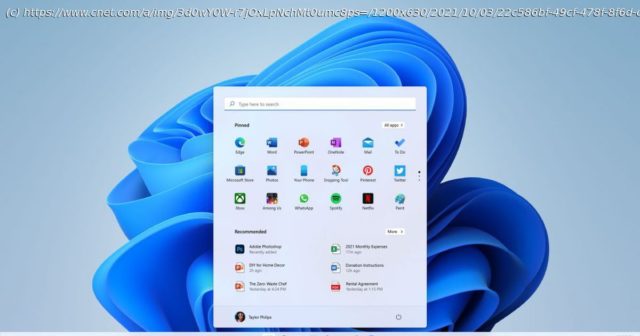Sorry, no Spinal Tap « goes to 11 » puns here. That’s mostly because Windows 11 feels more like Windows 10.5 than a generational leap — …
Sorry, no Spinal Tap « goes to 11 » puns here. That’s mostly because Windows 11 feels more like Windows 10.5 than a generational leap — not that there’s really anything wrong with that. An operating system, whether it’s MacOS on your MacBook or Google’s Wear OS on your smartwatch, gets better the more transparent it is to the end user. And that end user is you, sitting in front of a laptop keyboard or tapping on a phone screen. You’ll be able to find out starting on October 5, which is when Microsoft is making Windows 11 available on a rolling basis as a free upgrade to most Windows 10 users. If you have Windows 8, you’ll have tp get the free upgrade to Windows 10 first, then upgrade to Windows 11. Maybe the shift from Windows 10 to Windows 11 feels subtle because the jump from Windows 8 to Windows 10 was so gigantic. Big enough for Microsoft to skip an entire version number, even. That generation was all about righting a ship that had gone somewhat off-course, leaning too far into tablet territory, trying to convince everyone that Windows laptops and tablets were as cool as iPads. They’re not, and that’s OK: I work on a Windows machine, I do plenty of PC gaming on one, but when I flip through news headlines in bed at night, it’s on an iPad. Windows 10 started out with favorable reviews and has remained in everyone’s good graces precisely because it got out of the way of whatever you were doing instead of trying to force its ideas on you. But more importantly, it was free* — which includes an asterisk to indicate it was generally available as a no-cost upgrade to anyone with a non-ancient PC. Before 2015, Windows upgrades either cost some money, or if you bought a new laptop or desktop, the latest OS just came preinstalled. Apple’s OS X moved to a similar free-to-upgrade model around the same time. Except for system builders, the idea of paying separately for a computer operating system is basically extinct. That’s a big change from when you had to hand over $120 to Microsoft for the privilege of upgrading from Windows 7 to Windows 8. The list of compatible PCs is frankly a little narrower than I would have expected. The base requirements are a 64-bit processor,4GB of memory,64GB of storage, UEFI secure boot and TPM (trusted platform module) 2.0. It’s that last one that gets tricky for some people, especially on cheaper laptops. If you’ve got a CPU older than a 7th-gen Intel Core series (we’re up to 11th-gen now), you might be in trouble. If you want to check, use the Microsoft PC Health Check app. There are workarounds for installing Windows 11 anyway, but proceed with those at your own risk. If there’s one thing that immediately stands out about Windows 11, it’s this: The start menu and taskbar are now centered on the bottom of the screen, rather than aligned to the left by default. Yes, that’s the single biggest visual and interface change you’re going to see on day one. Sure, there’s plenty more going on underneath, but it feels like this UI shift is there mainly to let you know there’s something new and different going on under the surface. And there is a good deal going on in Windows 11. For casual or mainstream users, you’re unlikely to notice much of it, though there are some standout upgrades worth noting. One of the big selling points of Chromebooks, which run Google’s ChromeOS, is that most Chromebooks can run just about any Android app, from phone-centric favorites like Instagram to mobile games. That breaks Chromebooks out from being restricted to just cloud-based apps and frankly adds a lot of functionality to your $300 or so Chromebook. Microsoft is adding similar functionality to Windows 11, both to compete with Chromebooks and to forge greater bonds between Windows PC users and Android phone users, just as Macs and iPhones are inexorably bound.






